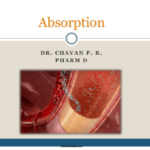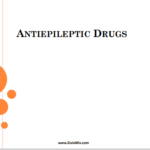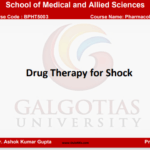ICH GUIDELINES
PRSENTED BY: SUKHMEET TANGRI
M.PHARM (PHARMACEUTICS)
MENTORED BY:
Dr. JAVED ALI
Dr. SANJULA BABOOTA
INTRODUCTION
The International Conference on Harmonisation of Technical
Requirements for Registration of Pharmaceuticals for Human Use
(ICH) is a unique project that brings together the regulatory
authorities of Europe, Japan and the United States and experts from
the pharmaceutical industry in the three regions to discuss scientific
and technical aspects of product registration.
ICH PARTIES
• European Commission – European Union (EU).
• European Federation of Pharmaceutical Industries and Associations (EFPIA).
• Ministry of Health, Labour and Welfare, Japan (MHLW).
• Japan Pharmaceutical Manufacturers Association (JPMA).
• US Food and Drug Administration (FDA).
• Pharmaceutical Research and Manufacturers of America (PHRMA).
OBJECTIVES
• More economical use of human, animal, and material resources.
• Elimination of unnecessary delay in the global development &
availability of new medicines.
• Maintaining safeguards on Quality, safety, efficacy and regulatory
obligations to protect public health.
COMPONENTS OF ICH GUIDELINES
The ICH topics are divided into four categories and ICH topic codes are assigned according to
these categories.
• Quality Guidelines
• Stability Testing • Safety Guidelines
• Photostability Testing of • Carcinogenecity Studies
New Drug Substances and • Genotoxicity and
Products Pharmacokinetic Studies
• Validation of Analytical • Reproductive Toxicity
Procedures Studies
• Impurities in New Drug
Substances • Multidisciplinary Guidelines
• the ICH medical terminology
• Efficacy Guidelines
(MedDRA),
• Preclinical Evaluation of
Biotechnology-Pharmaceuticals • the Common Technical
• use of pharmacogenetics/genomics Document (CTD)
techniques to produce better • the development of Electronic
targeted medicines. Standards for the Transfer of
• Standard for Expedited Reporting Regulatory Information (ESTRI).
QUALITY
STANDARDS
Q1A-Q1F: STABILITY
Q1A(R2): Stability Testing of New Drug Substances and ProductsQ1A
• Q1B: Stability Testing : Photostability Testing of New Drug Substances
and Products
• Q1C: Stability Testing for New Dosage Forms
• Q1D: Bracketing and Matrixing Designs for Stability Testing of New Drug
Substances and Products
• Q1E: Evaluation of Stability Data
• Q1F: Stability Data Package for Registration Applications in Climatic
Zones III and IV.
Q2: ANALYTICAL VALIDATION
Validation of Analytical Procedures: Methodology
Q3(A)-Q3(D): IMPURITIES
Q3A(R2): Impurities in New Drug Substances
• Q3B(R2): Impurities in New Drug Products
• Q3C(R5): Impurities: Guideline for Residual SolventsQ3C,Q3C(M)
• Q3(D): Guideline for Elemental Impurities
• Q3(D): Implementation of Guideline for Elemental Impurities.
Q4(A)-Q4(B): PHARMACOPOEIA
Q4(A) Pharmacopoeial Harmonisation
• Q4(B) Evaluation and Recommendation of Pharmacopoeial Texts for Use in the
ICH Regions.
Q5(A)-Q5(E): QUALITY OF BIOTECHNOLOGICAL
PRODUCTS
• Q5(A)(R1): Viral Safety Evaluation of Biotechnology Products
Derived from Cell Lines of Human or Animal OriginQ5A
• Q5(B): Analysis of the Expression Construct in Cells Used for
Production of r-DNA Derived Protein Products
• Q5(C): Stability Testing of Biotechnological/Biological Products
• Q5(D): Derivation and Characterization of Cell Substrates Used for
Production of Biotechnological/Biological Products
• Q5(E): Comparability of Biotechnological/Biological Products
Subject to Changes in their Manufacturing Process.
Q6A-Q6B: SPECIFICATIONS
Q6(A) Specifications: Test Procedures and Acceptance Criteria for
New Drug Substances and New Drug Products: Chemical Substances
• Q6(B) Specifications: Test Procedures and Acceptance Criteria for
Biotechnological/Biological Products.
Q(7): GOOD MANUFACTURING PRACTICES
In February 1998, the ICH Steering Committee agreed that GMP for Active
Pharmaceutical Ingredients (APIs) should be adopted as an ICH Topic.
Q(8): PHARMACEUTICAL DEVELOPMENT
This annex describes the principles of quality by design (QbD). The annex is
not intended to establish new standards, however, it shows how concepts and
tools (e.g., design space) outlined in the parent Q8 document could be put
into practice by the applicant for all dosage forms.
Q(9): QUALITY RISK MANAGEMENT
This Guideline provides principles and examples of tools of quality risk
management that can be applied to all aspects of pharmaceutical quality
including development, manufacturing, distribution, and the inspection and
submission/review processes throughout the lifecycle of drug substances and
drug (medicinal) products, biological and biotechnological products,
including the use of raw materials, solvents, excipients, packaging and
labelling materials.
Q(10): PHARMACEUTICAL QUALITY SYSTEM
This Guideline applies to pharmaceutical drug substances and drug
products, including biotechnology and biological products, throughout
the product lifecycle.
Q(11): DEVELOPMENT AND MANUFACTURE OF DRUG
SUBSTANCES
This new guidance is proposed for Active Pharmaceutical Ingredients
(APIs) harmonising the scientific and technical principles relating to the
description and justification of the development and manufacturing
process (CTD sections S 2.2. – S 2.6) of Drug Substances including both
chemical entities and biotechnological/biological entities.
Q(12): LIFECYCLE MANAGEMENT
This new guideline is proposed to provide guidance on a framework to
facilitate the management of post-approval Chemistry, Manufacturing
and Controls (CMC) changes in a more predictable and efficient manner
across the product lifecycle. Adoption of this new ICH Guideline will
promote innovation and continual improvement, and strengthen quality
assurance and reliable supply of product, including proactive planning of
supply chain adjustments.
SAFETY
• S1(A): Guideline on the need for carcinogenicity studies of pharmaceuticals
• S1(B): Testing for carcinogenicity of pharmaceuticals
• S1(C)(R2): Dose selection for carcinogenicity studies of pharmaceuticals
• S2(R1):Guidance on genotoxicity testing and data interpretation for
pharmaceuticals intended for human use
• S3(A): Note for guidance on toxicokinetics: the assessment of systemic exposure
in toxicity studies
• S3(B): Pharmacokinetics:guidance for repeated dose tissue distribution studies
• S(4): Duration of chronic toxicity testing in animals (rodent and non rodent
toxicity testing)
• S5(R2): Detection of toxicity to reproduction for medicinal products & toxicity
to male fertility
• S6(R1): addendum to ich
• S(6): preclinical safety evaluation of biotechnology-derived pharmaceuticals
• S7(A): Safety pharmacology studies for human pharmaceuticals
• S7(B): The non-clinical evaluation of the potential for delayed ventricular
repolarization (qt interval prolongation) by human pharmaceuticals
• S(8): Immunotoxicity studies for human pharmaceuticals
• S(9): Nonclinical evaluation for anticancer pharmaceuticals
EFFICACY
• E(1): The extent of population exposure to assess clinical safety
• E2(A): clinical safety data management
• E2(B)(R2): maintenance of the ICH guideline on clinical safety data management
• E2(B)(R3): revision of the ICH guideline on clinical safety data management ,Data
elements for transmission of individual case safety reports
• E2(C)(R1): clinical safety data management: periodic safety update reports for marketed
drugs
• E2(D): post-approval safety data management: definitions and standards for expedited
reporting
• E2(E): pharmacovigilance planning
• E2(F): development safety update report
• E(3): structure and content of clinical study reports
• E(4): dose-response information to support drug registration
• E(5)(R1): ethnic factors in the acceptability of foreign clinical data
• E(6)(R1): guideline for good clinical practice
• E(7): studies in support of special populations: geriatrics
• E(8): general considerations for clinical trials
• E(9): statistical principles for clinical trials
• E(10): choice of control group and related issues in clinical trials
• E(11): clinical investigation of medicinal products in the pediatric population
• E(12): principles for clinical evaluation of new antihypertensive drugs
• E(14): the clinical evaluation of qt/qtc interval prolongation and
proarrhythmic potential for non-antiarrhythmic drugs
• E(15): definitions for genomic biomarkers, pharmacogenomics,
pharmacogenetics, genomic data and sample coding categories
• E(16): genomic biomarkers Related to drug response
MULTIDISCIPLINARY GUIDELINES
• M(1)- MedDRA : Medical Terminology
• M(2)- ESTRI: Electronic Standards for the Transfer of Regulatory
Information
• M(3)- (R2): Nonclinical Safety Studies for the Conduct of Human Clinical
Trials and Marketing Authorization for Pharmaceuticals
• M(4)- CTD: The Common Technical Document
• M(5) : Data Elements and Standards for Drug Dictionaries










